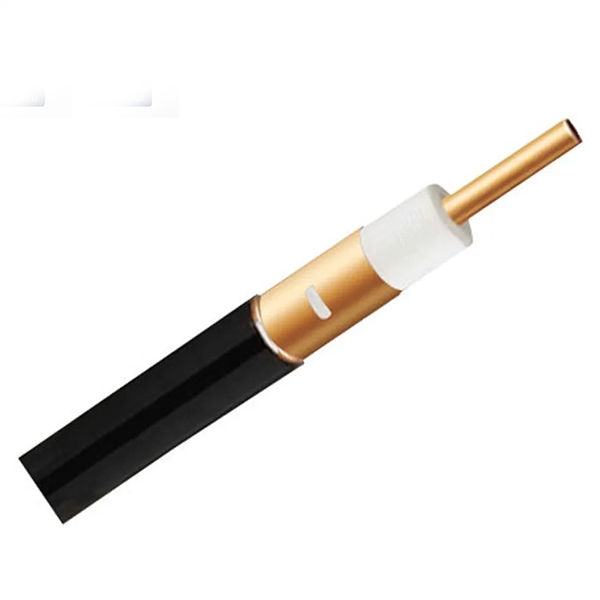What Are the Key Aspects of "1-5/8" Leaky Cable and Its Applications?

1-5/8" Leaky Coaxial Cable: A Deep Dive into Design, Deployment, and Destiny
The seemingly mundane "1-5/8" leaky coaxial cable belies a sophisticated technology crucial for widespread signal distribution in diverse and often demanding environments. This isn't simply a cable with holes; it's a precisely engineered system balancing signal leakage with attenuation, impedance matching, and environmental robustness. This article dissects the intricate aspects of this technology, venturing beyond the superficial to explore its underlying principles, practical applications, and future trajectory.
Beyond the Diameter: Unveiling the Technical Labyrinth
The 1-5/8" designation, referring to the outer conductor diameter, is merely the starting point. A comprehensive understanding necessitates delving into the nuanced interplay of critical specifications:
-
Attenuation Profile: Simple decibels-per-meter figures mask the complex frequency-dependent attenuation characteristics. Understanding the attenuation curve is paramount for predicting signal strength across varied distances and frequencies. Non-uniform attenuation profiles, intentionally engineered into some cables, can address specific coverage needs.
-
Impedance Control: The nominal 50-ohm impedance is a simplification. Variations along the cable's length, influenced by the perforation geometry and dielectric properties, can significantly impact signal integrity. Precise impedance control is vital for minimizing reflections and maximizing power transfer.
-
Leakage Characterization: The "leakage" isn't random; it's a meticulously designed phenomenon. Slot geometry, spacing, and orientation influence the radiation pattern, shaping signal coverage area and intensity. Detailed electromagnetic modeling is crucial for predicting and controlling this leakage.
-
Environmental Resilience: The cable's performance isn't solely determined by its internal structure. Environmental factors like temperature, humidity, and UV exposure significantly alter its electrical properties. Robust materials and protective coatings are essential for ensuring reliable operation in harsh environments.
Applications: Beyond the Obvious
While applications like public address systems and Distributed Antenna Systems (DAS) are well-known, the versatility of 1-5/8" leaky cable extends far beyond:
-
High-Speed Rail Communications: Reliable and secure communication along high-speed rail lines necessitates robust signal distribution solutions capable of handling high data rates and mitigating interference from the rapidly changing environment.
-
Undersea Cable Systems: Specialized versions, adapted for underwater deployment, play a vital role in providing communication links to offshore platforms and undersea research facilities. Addressing issues of water pressure, corrosion, and biofouling requires sophisticated design and material selection.
-
Smart City Infrastructure: Integrating these cables into smart city networks allows for distributed sensor data collection, enhancing traffic management, environmental monitoring, and public safety systems.
-
Hazardous Environments: In environments with high electromagnetic interference or potential explosions, the robustness and shielding characteristics of these cables provide a critical advantage.
Installation and Maintenance: A Delicate Balance
Installation isn't simply laying cable; it's a precision operation demanding meticulous attention to detail:
-
Pre-Installation Modeling: Sophisticated electromagnetic modeling software is often employed to predict signal coverage, identify potential interference sources, and optimize cable placement for optimal performance.
-
Advanced Connector Technologies: Standard connectors are often insufficient. Specialized connectors with impedance matching networks and environmental seals are critical for maintaining signal integrity and preventing degradation.
-
Predictive Maintenance: Regular inspection isn't enough. Advanced monitoring systems, using embedded sensors or remote diagnostics, enable proactive maintenance, preventing costly downtime and service disruptions.
The Future of Leaky Cables: Innovation on the Horizon
Future advancements will likely focus on:
-
Adaptive Leakage Control: Cables with dynamically adjustable leakage characteristics, controlled electronically, can optimize signal distribution in response to changing environmental conditions or user demands.
-
Integrated Sensing and Actuation: Embedding sensors and actuators into the cable allows for self-healing capabilities, real-time performance monitoring, and remote diagnostics.
-
Hybrid Fiber-Coax Systems: Integrating fiber optics with leaky coax allows for high-bandwidth data transmission alongside distributed signal distribution.
This expanded exploration illuminates the complexity and potential of 1-5/8" leaky coaxial cable, highlighting its vital role in modern communication systems and its potential for further advancements. It's more than just a cable; it's a critical component in the intricate web of global communication.

 Mobile Signal Booster
Mobile Signal Booster